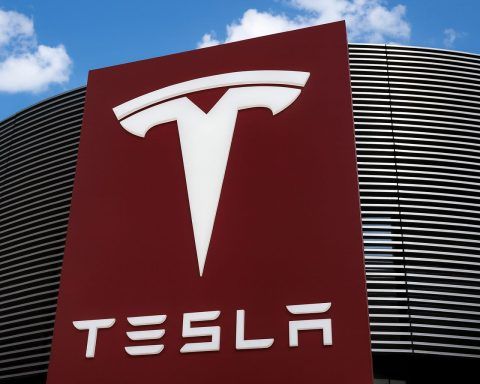Published: November 20, 2025
Xiaomi has just turned its electric‑vehicle experiment into a full‑blown business — and it’s moving faster than almost anyone expected, including Tesla.
On November 20, the Chinese tech giant lifted its 2025 EV delivery target from 350,000 to more than 400,000 cars, after confirming that its electric‑vehicle and AI division has turned profitable for the first time. [1]
That milestone comes less than two years after Xiaomi delivered its first car, and roughly 19–20 months after launching the SU7 sedan — dramatically quicker than the timeline Tesla needed to reach consistent profitability, and far ahead of many legacy carmakers still losing money on EVs. [2]
Below is a breakdown of what changed today, what Xiaomi’s latest numbers tell us, and why this matters for Tesla, Toyota, and Elon Musk’s AI ambitions.
Xiaomi Lifts 2025 EV Guidance After Break‑Even
Xiaomi’s updated guidance is the headline: the company now expects to ship over 400,000 electric vehicles in 2025, up from its earlier 350,000 goal, after seeing that it would hit the original target by this week. [3]
Key context behind that decision:
- Original 2025 goal: 350,000 EVs, which Xiaomi executives now say will be reached ahead of schedule in November. [4]
- New outlook: “More than 400,000” vehicles this year, reflecting strong demand for the SU7 sedan and the newer YU7 electric SUV. [5]
- Production milestone: Local coverage cites CEO Lei Jun noting that Xiaomi’s 500,000th vehicle has already rolled off the line, underscoring how quickly the company has scaled manufacturing. [6]
In other words, Xiaomi is no longer just an intriguing newcomer; it’s now running at a volume that many Western EV startups only dream of.
Inside Q3 2025: EVs Now a Quarter of Xiaomi’s Revenue
The confidence behind that higher target is rooted in blowout Q3 2025 results.
According to Xiaomi’s earnings release and subsequent coverage: [7]
- Group revenue:
- 113.1 billion yuan (about $16 billion) for Q3 2025
- Up 22.3% year‑on‑year
- Adjusted net profit:
- Around 11.3 billion yuan, up about 81% year‑on‑year, beating analyst estimates.
- EV, AI and “new initiatives” segment:
- Revenue: 29 billion yuan
- Of that, 28.3 billion yuan came from EVs alone (about 97.6% of the segment).
- Segment operating profit: 700 million yuan — Xiaomi’s first-ever quarterly profit from its EV and AI businesses. [8]
- Share of company revenue:
- EV, AI and other new initiatives now account for about 25% of total sales, up sharply from a year ago. [9]
On the volume side, Xiaomi delivered:
- Q3 EV deliveries: 108,796 vehicles
- Up 173% vs. a year earlier
- Up about 33% vs. Q2 2025
- Driven by both the SU7 sedan and the YU7 SUV, which began shipping in Q3. [10]
October added more fuel: Xiaomi delivered 48,654 EVs in a single month, its second straight month above 40,000 units, bringing total January–October deliveries to 315,376 cars — within striking distance of the original 350,000 full‑year target. [11]
It isn’t just about volume. Profitability metrics look surprisingly healthy for such a young car business:
- Gross margin for the innovative businesses (mostly EVs and AI) hit 25.5% in Q3 2025, up from 17.1% a year earlier (though slightly below Q2’s 26.4%). [12]
- Tech‑focused analysis of the earnings suggests Xiaomi made around 6,400 yuan of operating profit per vehicle in that segment in Q3, on average. [13]
Put simply: Xiaomi’s EV arm is no longer a cash‑burning experiment. It is generating material profit and carrying a quarter of the company’s top line.
YU7 vs. Tesla Model Y: The SUV That Changed the Story
One big reason Xiaomi could lift its EV target today: the YU7 electric SUV has become a hit almost overnight.
Recent reporting notes that in October: [14]
- Xiaomi delivered 108,796 EVs in Q3, with the YU7 accounting for a growing share.
- The YU7 ranked first in domestic SUV sales in China in October, edging past Tesla’s Model Y in what has long been Tesla’s defensive stronghold.
- The EV business generated more than $4 billion in Q3 revenue, roughly in line with the 28.3‑billion‑yuan figure reported in Xiaomi’s financials.
Why is the YU7 resonating?
According to specs and analysis:
- It’s priced below the Model Y in China while offering:
- A large 96.3–101.7 kWh battery pack,
- 800‑volt fast‑charging architecture,
- Long real‑world range and premium features like air suspension and Nappa leather interiors. [15]
Xiaomi is effectively applying its traditional hardware playbook — value‑for‑money specs with aggressive pricing — to the car world. For consumers who already trust Xiaomi phones, TVs and smart-home gear, a Xiaomi‑branded family SUV doesn’t feel like a big leap.
How Xiaomi Made EVs Profitable in Under Two Years
Most global automakers still lose money on battery‑electric cars. Yet Xiaomi’s EV division turned a 700‑million‑yuan operating profit in Q3, roughly 19–20 months after launching the SU7. [16]
Analysts and industry watchers point to several structural advantages:
1. A Built‑In Fan Base and Ecosystem
Xiaomi entered the car business with:
- A massive customer base of smartphone and gadget users in China,
- A trusted brand already associated with “good hardware at a fair price,”
- A tight ecosystem spanning phones, wearables, TVs, smart‑home devices and now cars.
That means Xiaomi spends less to acquire each EV customer compared with pure‑play startups that have to build awareness from scratch. InsideEVs cites consultants who argue that Xiaomi’s ecosystem strategy drives particularly low customer‑acquisition costs — a hidden but powerful profit lever. [17]
2. Treating the SU7 Like a Flagship Smartphone Launch
Rather than copying legacy automakers’ slow, dealer‑heavy rollouts, Xiaomi launched the SU7 the way it launches phones:
- Months of teaser campaigns,
- High‑frequency livestreams,
- Phased reveals and relentless social‑media engagement. [18]
That approach kept marketing costs efficient while ensuring substantial pent‑up demand by the time the first cars shipped.
3. Focused Line‑Up and Tight Supply Chain
Unlike legacy brands juggling dozens of nameplates, Xiaomi has concentrated on:
- The SU7 sedan,
- The YU7 SUV,
- A very limited number of variants within each model.
That focus helps it scale components, streamline manufacturing and negotiate better terms with suppliers, including major battery partners like CATL. [19]
4. Software‑First, “Smartphone on Wheels” Strategy
Xiaomi’s EVs are deeply integrated with its software stack and connected‑device ecosystem. Commentators note that this enables: [20]
- Differentiated infotainment and in‑car apps,
- Features that tie the car to the user’s Xiaomi ID and home devices,
- Future recurring revenue from cloud services, premium connectivity, and possibly app‑store‑style monetization.
That’s the same logic Tesla has used — but Xiaomi is borrowing it from the smartphone world, where it already knows how to run thin‑margin hardware paired with higher‑margin services.
Why Investors Are Still Cautious: Chip Costs, Subsidies and Price Wars
Today’s guidance upgrade is bullish, but the backdrop isn’t all rosy.
1. Memory‑Chip Costs Are Squeezing Smartphones
In the same week that Xiaomi celebrated its EV profit, management also warned that smartphone prices are likely to rise next year because of surging memory‑chip costs driven by AI data‑center demand. [21]
Key points from Xiaomi and follow‑up market commentary:
- Global DRAM and NAND prices are rising as chipmakers prioritize high‑bandwidth memory for AI servers.
- Xiaomi shipped 43.3 million smartphones in Q3 (up only 0.5% year‑on‑year), and can’t fully absorb higher chip costs without raising retail prices. [22]
- U.S.‑listed Xiaomi shares have seen notable volatility, with one recap noting their steepest single‑day drop in months after the pricing warning, even as the EV unit posted a record quarter. [23]
For investors, that raises a legitimate question: can booming EV profits fully offset pressure on the legacy smartphone core?
2. EV Subsidies in China Are Being Dialed Back
Xiaomi’s EV outlook is also clouded by shrinking tax incentives and a brutal price war in China’s EV market.
- Coverage of Xiaomi’s EV profitability notes that Chinese authorities are scaling back EV and hybrid tax breaks, even as competition intensifies. [24]
- With rivals like BYD, Li Auto, Xpeng and Nio all fighting for share, discounting can quickly eat into margins.
Xiaomi’s own executives have acknowledged that while the Q3 profit is a major milestone, the company still faces cumulative losses from the tens of billions of yuan it has poured into EV development over the past three years. [25]
3. Stock Market Still Playing “Wait and See”
Despite EV excitement, Xiaomi’s Hong Kong‑listed shares fell about 2.8% on the Q3 report as investors weighed:
- The smartphone pricing warnings,
- Ongoing macro uncertainty in China,
- And the risk that EV margins could compress if the price war worsens. [26]
For long‑term investors, Xiaomi is increasingly a leveraged bet on two volatile themes at once: EV adoption and the AI hardware cycle.
Faster Than Tesla, Different From Toyota: What Xiaomi’s Move Means
Today’s news inevitably invites comparisons.
Tesla: Beaten on the Profitability Clock
Xiaomi’s EV division hit operating profit in under two years from launch:
- Tesla needed about five years from first Roadster deliveries (2008) to record its first profitable quarter in 2013. [27]
- Some Chinese peers like Li Auto hit break‑even sooner than Tesla, but still took longer than Xiaomi. Xpeng and Nio are still working toward profitability, aiming to break even around 2025. [28]
That doesn’t mean Xiaomi’s EV business is “better” than Tesla’s — Tesla still enjoys global scale and higher software revenue — but it shows how powerful it can be when a tech company with an established ecosystem and supply‑chain heft moves into autos today, rather than starting from scratch in 2010.
Toyota: Proving Hybrids (Still) Pay the Bills
InsideEVs’ broader coverage this week contrasts Xiaomi’s rapid EV progress with Toyota’s booming hybrid business, which is printing profits even as pure‑EV sales wobble in some markets. [29]
Toyota’s message: hybrids are still a lucrative bridge technology. Xiaomi’s counter‑example: if you have the right cost structure and brand, full battery‑electric cars can be profitable surprisingly early.
Both stories underline a bigger point: there is no single, universal path to success in electrification.
Musk’s xAI: The AI Arms Race Around the Car
The InsideEVs column that dissected Xiaomi’s EV profit also flagged another trend: Elon Musk’s AI ambitions via xAI.
- xAI is reportedly in advanced talks to raise around $15 billion at a valuation near $230 billion, underscoring how central AI has become to the future of mobility, from autonomous driving to in‑car assistants. [30]
For Xiaomi, that’s both an opportunity and a warning. Its EVs already lean heavily on advanced software and driver‑assistance features; staying competitive will require sustained, heavy AI investment to keep up with both Tesla and AI‑native rivals.
What Comes Next: Models, Expansion and Regulation
1. Pushing Toward 400,000+ EVs
The immediate test is execution:
- Can Xiaomi scale production and deliveries smoothly to hit — or exceed — 400,000 EVs in 2025 without sacrificing margins or quality?
- October’s 48,654 deliveries and the rapid ramp of the YU7 suggest that the operational plumbing is in place, but EV manufacturing is notoriously unforgiving when demand fluctuates. [31]
2. Europe in 2027: The First Big Overseas Exam
Xiaomi has already laid out its first major overseas step:
- The company plans to enter the European EV market in 2027, with the SU7 already undergoing test registration in Europe and executives confirming that Europe will be the first overseas focus. [32]
That timeline gives Xiaomi time to:
- Build brand recognition for Xiaomi Auto outside China,
- Navigate EU tariffs and regulatory scrutiny on Chinese EVs,
- And localize software, safety and charging experiences for European drivers.
If the company can replicate its value‑for‑money proposition in Europe — and if trade barriers don’t harden too much — Xiaomi could emerge as one of the most disruptive new entrants in the region’s EV market.
3. Regulatory and Geopolitical Risks
Finally, Xiaomi’s story can’t be separated from macro headwinds:
- Ongoing debates about tariffs on Chinese EVs in Europe and North America,
- Growing tension around AI regulation (which will spill over into autonomous features),
- And China’s domestic property slowdown and consumer‑confidence issues, which could eventually cool demand for big‑ticket items like cars. [33]
For now, though, Xiaomi has something rare in the EV world: scale, growth, and profit — at the same time.
Quick FAQ: Xiaomi’s EV Breakthrough, Explained
Is Xiaomi’s EV business profitable now?
Yes. Xiaomi’s EV, AI and other new initiatives segment recorded an operating profit of about 700 million yuan in Q3 2025, its first profitable quarter after less than two years of EV sales. [34]
How many EVs will Xiaomi sell in 2025?
Xiaomi originally targeted 350,000 EV deliveries for 2025. With that goal set to be reached ahead of schedule in November, the company has now raised its guidance to more than 400,000 vehicles for the year. [35]
Which models are driving Xiaomi’s EV growth?
Two vehicles dominate:
- SU7: A sporty electric sedan often compared to a more affordable, tech‑heavy take on high‑end EVs.
- YU7: A family‑oriented SUV that has recently surpassed Tesla’s Model Y in Chinese SUV sales, at least for October, thanks to its combination of price, range and features. [36]
How does Xiaomi compare with Tesla on profitability?
Xiaomi’s EV division turned profitable in under two years, versus roughly five years for Tesla to reach its first profitable quarter. However, Tesla still has far larger global scale and a richer software and services stack. Xiaomi’s advantage lies in fast execution and a powerful home‑market ecosystem, especially in China. [37]
What are the biggest risks to Xiaomi’s EV story?
- Rising memory‑chip costs that could squeeze smartphone and EV margins,
- Reduced EV subsidies and intense price competition in China,
- Potential trade barriers as it eyes Europe in 2027,
- And the need to keep up with rapidly escalating AI investment across the industry. [38]
How Xiaomi navigates those risks — while chasing that 400,000‑plus EV target — will determine whether today’s milestone is the start of a new era, or a high‑water mark in an increasingly crowded race.
References
1. www.bloomberg.com, 2. insideevs.com, 3. www.bloomberg.com, 4. cnevpost.com, 5. www.bloomberg.com, 6. www.ainvest.com, 7. www.reuters.com, 8. cnevpost.com, 9. www.reuters.com, 10. cnevpost.com, 11. cnevpost.com, 12. cnevpost.com, 13. www.techinasia.com, 14. www.notebookcheck.net, 15. www.notebookcheck.net, 16. insideevs.com, 17. insideevs.com, 18. insideevs.com, 19. www.reuters.com, 20. evdances.com, 21. www.reuters.com, 22. www.reuters.com, 23. stocktwits.com, 24. www.bloomberg.com, 25. cnevpost.com, 26. www.reuters.com, 27. insideevs.com, 28. insideevs.com, 29. insideevs.com, 30. www.reuters.com, 31. cnevpost.com, 32. cnevpost.com, 33. www.bloomberg.com, 34. www.reuters.com, 35. www.bloomberg.com, 36. www.notebookcheck.net, 37. insideevs.com, 38. www.reuters.com










